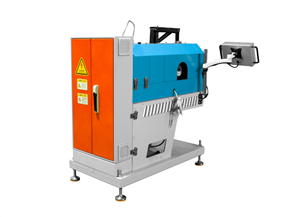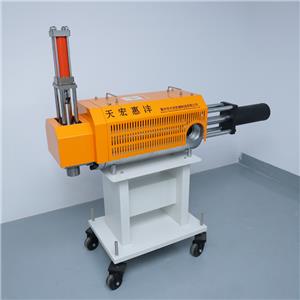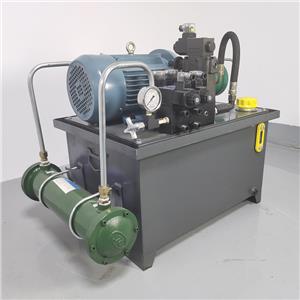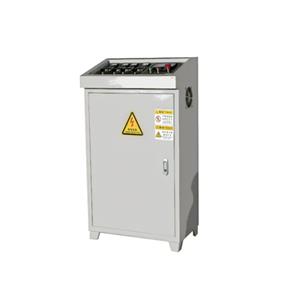The integration and innovation of degradable polyester materials and 3D printing technology
Degradable polyester materials: degradable polyester materials are a class of biodegradable polymer materials, which can be gradually decomposed into small molecules in the natural environment or through the enzymatic hydrolysis of organisms, and eventually absorbed by organisms or discharged from the body. This kind of material has a wide application prospect in the medical field because of its good biocompatibility, degradability and processing performance.
Common degradable polyester materials: including polylactic acid (PLA), polyglycolic acid (PGA), polyε-caprolactone (PCL), polytrimethylcarbonate (PTMC), polyp-dicyclohexanone (PPDO) and so on. The degradation cycle, mechanical properties and hydrophilicity of these materials can be controlled by different monomer ratios and copolymerization methods to meet different medical needs. Degradable polyester materials combined with 3D printing technology show great potential in personalized medical customization, can accurately manufacture complex medical implants that meet the needs of patients, surgical guides, etc., to achieve precision medicine at the same time, the material can be absorbed by the body after the completion of the task, reduce the risk of secondary surgery, and promote the rehabilitation of patients.
First, personalized customization of degradable polyester materials for medical purposes
Personalized implementation
1. Monomer ratio and copolymerization method:
By adjusting the monomer ratio and copolymerization mode of degradable polyester materials, the degradation period, mechanical properties and hydrophilicity of degradable polyester materials can be precisely regulated. For example, the copolymer PLCL of polylactic acid (PLA) and polε-caprolactone (PCL) can control the degradation rate and mechanical properties of the material by changing the ratio of PLA and PCL.
2. Molecular chain structure design:
Molecular chain structure design of polymer such as molecular weight size and distribution width, end modification, block, branching, crosslinking, hyperbranched, etc., can further control the properties of materials. For example, the strength and toughness of polylactic acid can be improved by introducing ductile chain segments or constructing cross-linked networks.
3. Aggregation structure control:
By controlling the aggregation structure of polymers such as orientation and crystallization, the degradation cycle and mechanical properties of materials can be controlled. For example, mechanical self-reinforcement can be achieved by inducing PLLA to form fibrous crystals through draft orientation. The degradation cycle of PLLA materials can be controlled by adjusting the crystallinity of PLLA materials with nucleating agents.
4. Blending design:
The texture structure of the heterogeneous system can be designed by blending and other means to effectively control the performance of degradable polyester materials. For example, the mechanical strength and biological activity of degradable polyester composites can be improved by blending bioactive inorganic nanomaterials. By blending the developable material, the developable polyester material can be given the developable effect.
Personalized application examples
1. Tissue engineering and regenerative medicine:
Degradable polyester materials can be used to prepare 3D printed tissue engineering stents, which can be personalized to the specific needs of patients. For example, by adjusting the degradation rate and mechanical properties of the material, a scaffold can be prepared to match the patient's tissue, thereby promoting tissue regeneration and repair.
2. Surgical AIDS:
3D printing technology can also manufacture surgical AIDS, such as surgical guides, surgical models, etc. These tools can help doctors simulate and plan before surgery, improving surgical accuracy and safety.
3. Biodegradable medical devices:
Such as biodegradable stents, these devices can gradually degrade after implantation in the body, avoiding the long-term risks that may be caused by traditional metal stents. At the same time, the personalized design of biodegradable stents can better adapt to the patient's vascular structure and improve the treatment effect.
PCL, PLA and PLCL have their own characteristics in the field of biomedical materials. PCL has good biocompatibility, controllable degradation and excellent mechanical properties. However, the degradation rate is slow and the strength is relatively low. PLA has complete biodegradation, good processing performance and high mechanical strength. But the brittleness is large, the degradation rate may be too fast.
PLCL combines the toughness of PCL with the strength of PLA, has controllable degradation cycle, excellent mechanical properties and good biocompatibility. It is suitable for various tissue engineering applications such as cartilage repair, nerve conduit, vascular stent and bone repair. The application of PLCL additive manufacturing technology in tissue engineering has significant advantages and potential.
Second, the application of PLCL additive manufacturing technology in tissue engineering
1. External tracheal stent:
PLCL material with shape memory function is used to prepare an external tracheal stent with personalized shape and size through 3D printing technology. The stent can quickly return to the predetermined shape after implantation, provide stable support for the trachea, and have good biocompatibility and degradability.

2. Breast implants:
Personalized breast implants are prepared using degradable polyester materials according to the patient's breast shape and size requirements. The implant is able to degrade gradually over time and eventually be absorbed by the body, avoiding the long-term complications that can come with traditional implants.
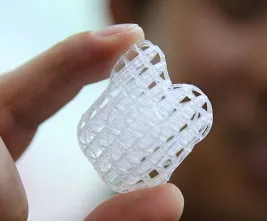
3. Other medical devices:
Degradable polyester materials can also be used to prepare personalized orthopedic implants, cardiovascular interventional devices, absorbable sutures and other medical devices. These devices can be customized to the individual needs of patients, improving treatment outcomes and patients' quality of life.
Polymer material has successfully applied PLCL additive manufacturing technology in tissue engineering, and has expanded to many fields such as medical 3D printing wire, biological 3D printing, and SLS 3D printing of medical microsphere raw materials.
Third, the application of degradable biomedical materials
Medical 3D printing wire
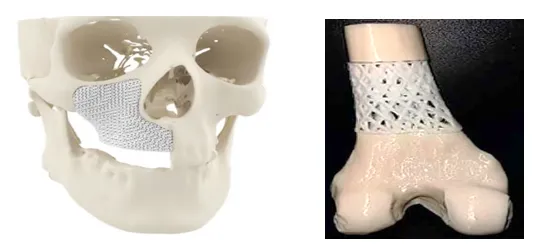
PLA medical wire has important application value in 3D printing maxillofacial bone/skull repair, cartilage repair porous scaffolds, vascular scaffolds, etc. Its good bioabsorbability, high strength and ductility, and good biocompatibility make PLA 3D printed lines widely used in the medical field. Examples include absorbable maxillofacial bone repair implants and porous bone repair scaffolds.
Application of medical microspheres in SLS 3D printing
On July 23, 2024, a technology named "A Medical 3D printing controllable microsphere preparation process" successfully developed by Shenzhen Guanghua Weiye Co., Ltd. and its subsidiary Shenzhen Jusheng Biotechnology Co., LTD., officially passed the review of the State Intellectual Property Office and won the national invention patent authorization. The invention focuses on developing a preparation process that ensures that microspheres used in medical 3D printing have a controllable particle size and biodegradation rate.
The core of the preparation process is to achieve precise control of the particle size and biodegradation rate of the microspheres, which provides a strong support for the application of SLS 3D printing technology in the medical field.
1. Drug Delivery System:
Medical microspheres can be used as carriers for drug delivery systems, and microspheres with specific structures and properties can be precisely prepared by SLS 3D printing technology. These microspheres can carry drug ingredients and achieve precise drug release in the body, improving drug efficacy and reducing side effects.
2. Tissue engineering scaffolds:
SLS 3D printing technology can be used to prepare tissue engineering scaffolds with bionic structure and mechanical properties. As a component of scaffolds, medical microspheres can provide the support and nutrition required for cell growth and promote tissue regeneration and repair.
3. Cell culture microenvironment: Through SLS 3D printing technology, cell culture microenvironment with micropore structure and complex geometry can be prepared. As a part of the microenvironment, medical microspheres can provide the attachment points and nutrients required for cell growth and optimize cell culture conditions.
3D bioprinting
PCL is a thermoplastic polyester with good biocompatibility, degradability and mechanical properties. PCL raw materials can be processed by different 3D printing technologies (such as fused deposition modeling FDM, selective laser sintering SLS, etc.) to form 3D printed products with complex structures and functions.
Particle melt extrusion is an important process in bioprinting, which involves heating PCL particles to a molten state and then extruding them through a nozzle onto a printing platform to form 3D structures layer by layer. This process has the advantages of high precision, high efficiency and high flexibility to meet different medical needs.
1.Tissue engineering:
PCL can be used as a tissue engineering scaffold material to support cell growth and differentiation, and promote tissue repair and regeneration. Through bioprinting technology, tissue engineering scaffolds with complex structures and functions can be prepared to provide better support for tissue repair and regeneration.
2. Surgical planning:
PCL raw materials are used to print 3D models of specific parts of patients, which helps surgeons to carry out surgical planning and simulation operations. This can improve surgical accuracy and safety and reduce surgical risks.
3. Medical devices and implants:
PCL raw materials can also be used to manufacture medical devices and implants, such as surgical guides, bone pins, bone plates, etc. These medical devices and implants have good biocompatibility and mechanical properties and can meet different medical needs.

